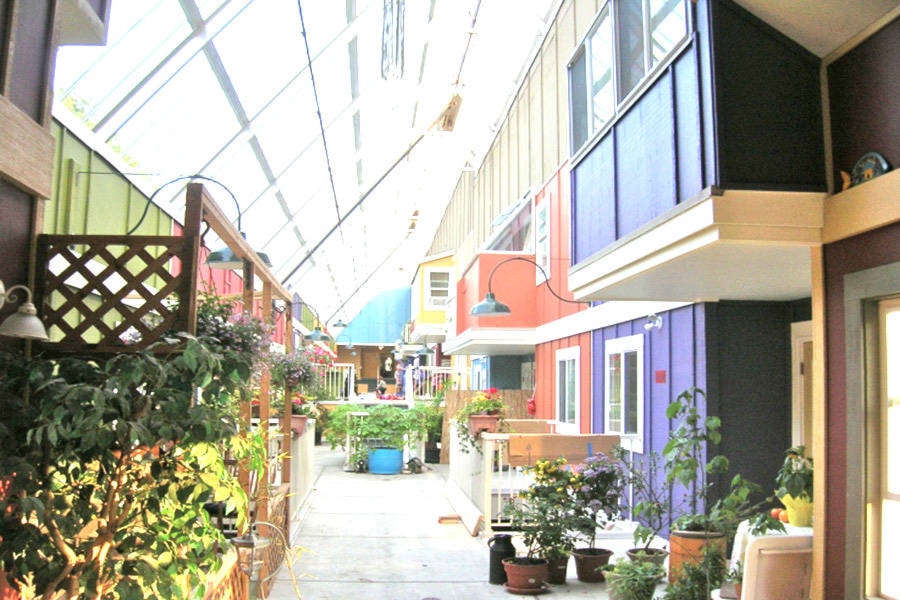Over the past 10 years I’ve been a big fan of cohousing. I did a five-day facilitation training with husband-and-wife architects Charles Durrett and Katie McCamant, both of whom are considered the instigators of the growing cohousing movement in North America. I’ve toured 10 cohousing communities but had never actually spent more than a day in each one — until now.
A rental opportunity came up in a cohousing community on Vancouver Island. As I write this I’m four of seven weeks along in this exploration. So what exactly is cohousing?
According to the National Cohousing Association in the U.S., “cohousing is community designed to foster connection, an intentional community of private homes clustered around shared space. Each attached or single-family home has traditional amenities, including a private kitchen. Shared spaces typically feature a common house, which may include a large kitchen and dining area, laundry, and recreational spaces. Shared outdoor space may include parking, walkways, open space and gardens. Neighbours also share resources like tools and lawnmowers. Cohousing makes it easy to form clubs, organize carpooling and child or elder care.”
I was curious to find out if I would be a fit for this lifestyle because, contrary to popular opinion, I am bit reclusive. So far I’m having a lovely time in my self-contained two-bedroom apartment, getting to know the neighbours, participating in potlucks, Sunday brunches and M&M (Meal & Movie) Nights. Everything is optional and help with prep and clean-up is appreciated.
Most “coho” communities are kept to around 30 dwellings or 50-odd people. The forming members are involved in the planning stages and act as the developer, which saves money. They take the risk and invest the funds to make the project happen while working with architects and other professionals. The legal structure is a self-managed strata, which empowers residents, builds community and saves money. Decision making is participatory and based on consensus. Homes are bought and sold at market value.
The challenges in cohousing are finding the land along with a committed group willing to put in the time and financial infusions as the project progresses, which typically takes around five years and involves many meetings. By move-in date, the forming members have forged deep relationships.
Living in cohousing is similar to being married to a bunch of like-minded friends who don’t always agree. Incoming residents need to understand the community’s focus and live by its rules and expectations. If you have a pleasant personality, patience and are willing to do your fair share, it could be the best decision you’ll ever make.
I hope to facilitate an “affordable” double cohousing community with a shared common house — one for young families and the other for empty-nesters and downsizers — because it’s the land cost that makes housing so out-of-reach. The affordability would be in the acquisition of an acre or two inside Paterson Park, which the City of Delta would lease for a dollar a year. Anyone who wants to be part of forming a group for young families or older adults, let me know.
(To learn more visit the Canadian Cohousing Network website at cohousing.ca.)
ML Burke retired from the health sector to work on issues such as affordable housing. She sits on the Delta Seniors Planning Team, the City of Delta’s Community Liveability Advisory Committee and the BC Seniors Advocate’s Council of Advisors.
editor@northdeltareporter.com
Like us on Facebook and follow us on Twitter
